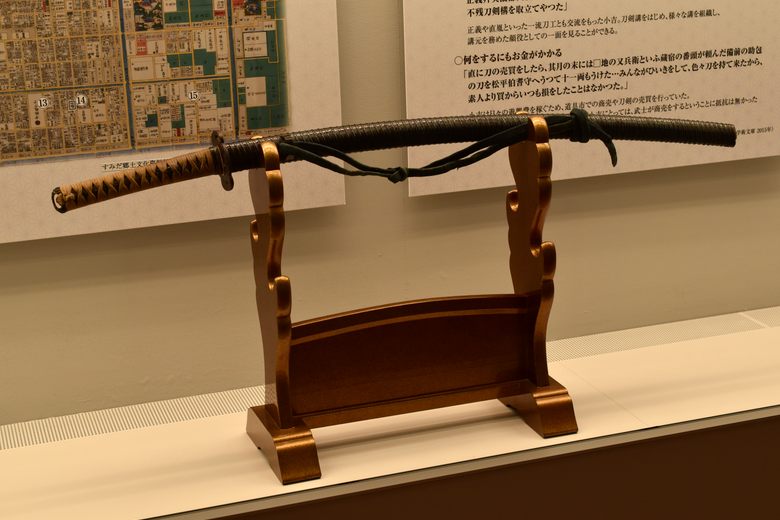
The hilt of a samurai sword is the area of the handle that conceals the tang, or pommel, and includes all but one of a blade’s guard (nakago). It is primarily made from wood and covered in leather, which can be reinforced by lacquer. The hilt is constructed in a complex process that involves the heating, folding, and laminating of the sword material of on a tang. This article will discuss components of hilts.
Tsuba
The tsuba (guard) is a round, oval, or square plate of metal used as a samurai sword guard. Tsuba are forged and it would be difficult to do this with wood because the blade would have to be removed and refitted after each hole was made. The tsuba is usually made of steel or some form of alloy. Tsuba are often decorated and make a nice statement piece on the katana.
Saya
The saya (scabbard) is used to store and carry the sword when it is not in use. A samurai was not allowed to wear a sword into battle, so most swords were stored in a scabbard for quick retrieval for combat situations. The saya that contains your katana will differ from your saya for your wakizashi (short sword).
Nakago
The Nakago (cleft) is the tang of the sword made out of either a primary metal or a secondary material. The nakago is the portion of the blade that has not been used to form the blade’s cutting edge. This is also known as the “back” of the sword and is usually one-third to one-half of the length of a single-edged katana (at most, this can vary by as much as half an inch). A nakago is flanked by two oval or round guard plates (kashira) and a rectangular section (mekugiana). This section of the blade is called the “kissaki” or “point”, and is sometimes decorated.
Nakago-gake
The nakago-gake or collar is an extension of the tang that protects the area where the yokote (blade pin) will be attached to the blade. The collar may be made of metal, bamboo, or hardened leather. It usually has a decorative element.

Kyusu-kagami
The kyusu-kagami (cup mount) is used for storing and drinking sake from: a Chinese bowl called a kyusu (carved wood), or from commoner’s wooden or clay cups, or from fine leather or ceramic vessels. The kyusu-kagami is typically an ornamental mounting that fits into the hole in the saya.
Yokote
The yokote is a ridge on the sword that extends from the kissaki back toward the kurigata (blood groove or blood groove grooves) for about 10-20 cm (4-8 in). The yokote is used to add strength to the blade. It also helps guide the habaki on the blade into place and can serve as a pivot point when disassembling or assembling a katana from its saya.
